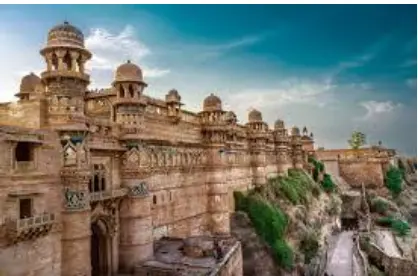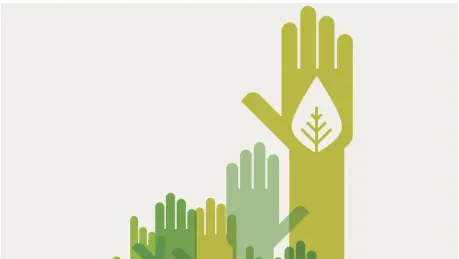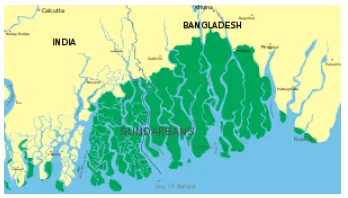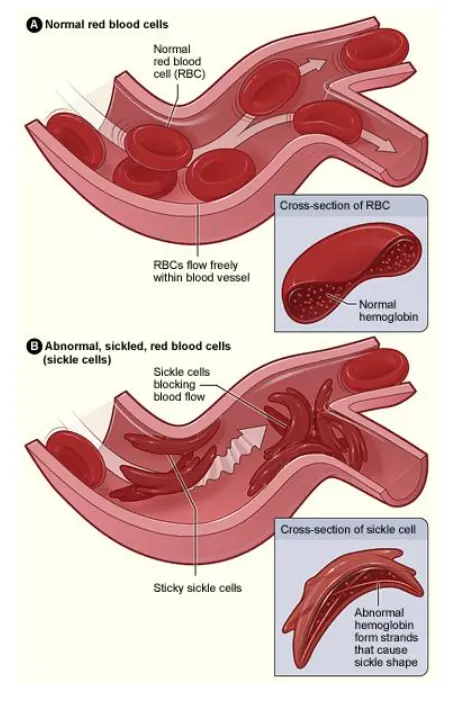Wednesday, 3rd April 2024
Supreme Court Halts Implementation of Amended IT Rules
In News: The notification by the central government establishing a Fact Check Unit (FCU) has been temporarily halted by the Supreme Court of India.
Fact Checking Unit and Amended IT Rules 2023
- Introduction of Fact Checking Unit (FCU)
- Designated as a statutory body under the Press Information Bureau (PIB) by the Ministry of Electronics and Information Technology.
- Tasked with identifying and flagging false information related to the central government and its agencies on social media platforms.
- Key Provisions of Amended IT Rules 2023
- Online intermediaries, including social media platforms and internet service providers, mandated to prevent dissemination of inaccurate information about the Government of India.
- Requirement for intermediaries to avoid hosting content flagged as false by the FCU.
- Obligation for intermediaries to remove flagged content to maintain safe harbor protection.
Major Concerns Related to the Amended IT Rules 2023
- Potential Arbitrary Enforcement
- Concerns about subjective judgments by FCU, leading to selective targeting.
- Criticisms regarding violation of constitutional articles and the Shreya Singhal vs Union of India ruling.
- Impact on Intermediaries
- Burden on intermediaries for content monitoring and removal.
- Risk of over-censorship to avoid legal repercussions.
- Potential for Misuse
- Fear of government using rules to suppress dissenting opinions or criticism.
- Lack of safeguards against misuse threatens democratic discourse and transparency.
Way Forward
- Transparency and Accountability
- Ensure transparent operations of FCU with clearly defined criteria and procedures.
- Establish oversight mechanisms to prevent misuse.
- Clear Guidelines and Due Process
- Develop clear guidelines and due process for intermediaries when handling flagged content.
- Provide avenues for appeals and base removals on objective criteria and evidence.
- Legal Safeguards
- Ensure regulatory measures comply with constitutional principles and international human rights standards.
- Implement safeguards to prevent overreach and protect freedom of speech and expression.
|
UPSC Previous Year Questions Prelims (2017) Q. In India, it is legally mandatory for which of the following to report on cyber security incidents?
Select the correct answer using the code given below: (a) 1 only Ans: D |
Source: IE
Reserve Bank of India
In News: Prime Minister Narendra Modi spoke at a ceremony commemorating the 90th anniversary of the Reserve Bank of India in Mumbai.
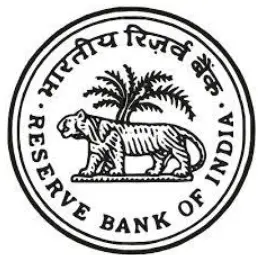
Reserve Bank of India (RBI) Overview
- Establishment and Ownership
- Established in 1934 under the Reserve Bank of India Act.
- Initially privately owned, nationalized in 1949 and fully owned by the Government of India's Ministry of Finance since then.
- Composition of RBI
- Governed by a 21-member central board of directors.
- Includes one Governor, four Deputy Governors, government-nominated Directors, Finance Ministry Representatives, and Directors representing local boards.
- Primary Functions
- Monetary Authority: Formulates and implements monetary policy.
- Financial System Regulation: Regulates banking operations and ensures public confidence in the financial system.
- Foreign Exchange Management: Manages foreign exchange and promotes orderly development of the foreign exchange market.
- Currency Issuance: Issues, exchanges, and maintains currency supply.
- Developmental Role: Supports national objectives through promotional functions.
- Payment and Settlement Systems Regulation: Introduces and upgrades payment systems to maintain public confidence.
Historical Journey
- 1935-1949: Establishment and response to post-war economic challenges.
- 1950-1960: Development of centrally planned economic policies.
- 1961-1968: Establishment of deposit insurance system and restructuring of national bank market.
- 1969-1984: Nationalization of major commercial banks and increased central bank policies.
- 1985-1990: Financial repression period followed by liberalization efforts.
- 1991-1999: Economic restructuring following rupee devaluation.
- 2000-2009: Implementation of Foreign Exchange Management Act and promotion of economic development.
- Since 2010: Establishment of Monetary Policy Committee and regulatory measures on virtual currencies.
Recent Developments
- Address by Prime Minister Narendra Modi at RBI@90 program.
- Emphasis on RBI's historic role, professionalism, and commitment.
- Focus on fast-paced growth, stability, and financial inclusion.
- Recognition of RBI's impact on common citizens and the nation's youth.
- Importance of digital transactions, financial empowerment, and cyber security in the evolving banking landscape.
Source: TH
LGBTQIA+ Rights in India
In News: The Supreme Court (SC) has cautioned judges against employing court-ordered counseling as a means to coerce LGBTQ+ individuals into renouncing their identity and sexual orientation, particularly in cases where they face distress or separation from their partners due to family pressure.
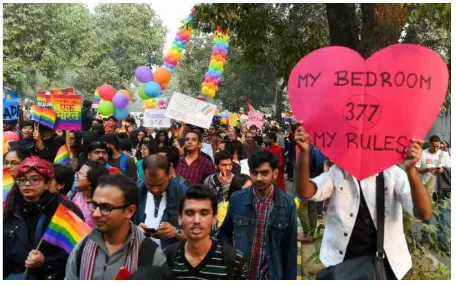
LGBTQIA+ Rights and Recognition in India
- Background and Evolution
- Introduction of Section 377 in the colonial era, hindering LGBTQIA+ rights.
- Emergence of activism and landmark legal battles since the 1990s.
- Key Milestones
- Recognition of transgender individuals as a "third gender" by the Supreme Court in 2014.
- Decriminalization of same-sex relationships by striking down Section 377 in 2018.
- Passage of Transgender Persons (Protection of Rights) Act in 2019.
- Legal acknowledgment of live-in relationships for same-sex couples in 2020.
- Expansion of family definition to include same-sex couples by the Supreme Court in 2022.
Recent Legal Challenges
- Supreme Court's rejection of petitions to legalize same-sex marriage in 2023.
- Ruling that modification of Special Marriage Act falls under legislature's jurisdiction.
Major Challenges Faced
- Social Stigma: Persistent societal prejudice leading to harassment and violence.
- Family Rejection: Experience of discrimination and homelessness within families.
- Healthcare Access: Barriers to LGBTQIA+-friendly healthcare services.
- Inadequate Legal Recognition: Lack of protections for non-binary individuals and legal challenges related to civil rights.
- Intersectional Challenges: Compounded discrimination faced by LGBTQIA+ individuals belonging to marginalized communities.
- Manipulative Counseling: Harmful practices like conversion therapy exacerbating challenges.
Way Forward
- Push for Legal Reforms: Legislative action to recognize LGBTQIA+ rights through separate laws or amendments.
- Entrepreneurship and Economic Empowerment: Support for LGBTQIA+ entrepreneurship and promotion of LGBTQIA+-friendly workplaces.
- Healthcare Access: Ensuring access to LGBTQIA+-friendly healthcare services and training for healthcare providers.
- Sports as a Game Changer: Utilizing sports to break stereotypes and foster community bonding among LGBTQIA+ individuals.
Source: TH
Heat Waves - Edukemy Current Affairs
In News: According to the India Meteorological Department (IMD), numerous regions across the nation are expected to experience a hot and arid summer from April to June. There's a significant likelihood of prolonged heatwaves persisting for 10 to 20 days during this period.

India Meteorological Department (IMD)
- About
- Established in 1875, headquartered in New Delhi.
- Responsible for weather forecasting, seismology, and meteorological observations.
- Functions as the National Meteorological Service of India.
- Mandate
- Observations: Conducting meteorological observations.
- Forecasting: Providing current and forecast information for weather-dependent activities.
- Warnings: Issuing warnings against severe weather phenomena.
- Statistics: Providing meteorological statistics.
- Research: Engaging in meteorological research.
- Nodal Ministry
- Ministry of Earth Sciences of the Indian Government.
Heat Waves
- Definition
- Periods of abnormally high temperatures exceeding the normal maximum temperature.
- Typically occur from March to June, occasionally extending to July.
- Classified based on departure from normal temperature or actual maximum temperature.
- Impacts
- Rapid rise in heat can lead to heat-related illnesses such as heat cramps, exhaustion, stroke, and hyperthermia.
Prediction by IMD
- Extreme heat forecasted for April to June, particularly in central and western peninsular parts.
- Expectation of 10 to 20 days of heatwave across the country.
- Areas like Gujarat, central Maharashtra, north Karnataka, Rajasthan, Madhya Pradesh, Odisha, north Chhattisgarh, and Andhra Pradesh likely to experience severe heatwaves in April.
- Below-average pre-monsoon rainfall anticipated, especially over coastal and eastern/southern peninsular India.
- El Nino conditions observed since last June, likely to suppress rainfall over India and elevate global temperatures.
- Warm conditions persisted in February and March, leading to heatwave conditions in southern peninsular India and regions like Maharashtra, northern Karnataka, Saurashtra-Kutch, and parts of Rajasthan.
- Maximum temperatures recorded in late March reached up to 42.6 degrees Celsius in Akola, Maharashtra, and Phalodi, Rajasthan.
Source: IE
Bridge Fuel
In News: Natural gas is often referred to as a 'bridge fuel' for nations seeking to move away from reliance on coal and oil, serving as an intermediary step towards the adoption of renewables and electrification.
Definition of Bridge Fuel
- Bridge fuel refers to a fuel used to power society with minimal environmental impact while transitioning to cleaner, renewable energy sources.
- The goal is to replace current fossil fuel-dependent energy sources as the world shifts towards a renewable energy economy free of greenhouse gas emissions.
Debate Surrounding Bridge Fuel
- Length of the bridge and the energy source used are subjects of debate.
- Natural gas is often considered a bridge fuel due to its lower greenhouse gas emissions during combustion.
- Additional considerations include its impact on national energy independence and pollution-related costs.
Key Facts about Natural Gas
- Natural gas is a fossil fuel and a nonrenewable resource.
- It consists primarily of methane (CH4) along with other hydrocarbons like ethane (C2 H6) and propane (C3 H8).
- Possible impurities include carbon dioxide (CO2), hydrogen sulfide (H2S), and nitrogen (N).
Formation of Natural Gas
- Natural gas formed millions to hundreds of millions of years ago from the remains of plants and animals buried under layers of sediment.
- Pressure and heat transformed the organic material into natural gas, which is often found deep within the earth near coal and crude oil deposits.
Uses of Natural Gas
- Processed into cleaner fuels for consumption, with by-products like propane and ethane extracted during processing.
- Used for electricity generation, heating, and as fuel for vehicles (CNG).
- Employed in boilers, air conditioners, and in the production of fertilizers such as ammonia.
- Considered a bridge fuel for countries transitioning from coal and oil dependency due to its lower CO2 emissions compared to coal.
Source: DTE
Reserve Bank of India's (RBI) Guidelines on Penal Charges on Loan Accounts
In News: Recently, the latest guidelines from the Reserve Bank of India (RBI) regarding penal charges on loan accounts have been implemented.
RBI Guidelines on Penal Charges on Loan Accounts
- Prohibition of Penal Rates
- Commercial banks and finance companies are barred from imposing penal rates on borrowers for loan defaults or any other non-compliance event.
- Treatment of Penalty
- Penalty for non-compliance with the loan contract terms and conditions should be considered as 'penal charges'.
- Penal interest added to the interest rate on advances is not permitted.
- Penal charges should not be capitalized, and no further interest should be computed on them.
- Definition of Material Terms
- Material terms and conditions will be defined according to the bank's credit policy.
- These terms may vary based on the loan category and the bank's assessment.
- Reasonable Quantum
- There is no upper limit for penal charges, but they must be reasonable and commensurate with the non-compliance.
- Penal charges should not be discriminatory within a loan category.
- Parity for Individual Borrowers
- Penal charges for loans to individual borrowers should not exceed those for non-individual borrowers for similar non-compliance.
- Board Approved Policy
- Banks must follow a board-approved policy on penal charges for loans to prevent arbitrary rates of interest.
- Exclusion of Credit Cards
- These guidelines do not apply to credit cards, as they are covered under product-specific directions.
- Rationale
- The guidelines aim to instill credit discipline and prevent penal charges from being used as a revenue enhancement tool beyond the contracted interest rate.
Source: ET
Leap Second
In News: A recent study has brought attention to the possibility of Earth's evolving rotation, influenced by factors such as climate change and geological movements, leading to the need for clocks to omit a second.

Leap Seconds: Keeping Time with Earth's Rotation
- Leap seconds are introduced periodically to Coordinated Universal Time (UTC) to adjust for the Earth's slowing rotation caused by factors like the melting and refreezing of ice caps.
- The purpose of leap seconds is to synchronize worldwide clocks with the Earth's rotation, ensuring accurate timekeeping.
- The system of leap seconds was established in the early 1970s, and to date, 27 positive leap seconds have been added to UTC.
- UTC is based on atomic clocks, which are highly precise and stable within 1 second over millions of years, while Universal Time (UT1) is based on the Earth's rotation.
- The addition of leap seconds is necessary because the Earth's rotation is not constant due to factors like gravitational forces from the moon, resulting in variations in the length of a day.
- When the difference between UTC and UT1 approaches 0.9 seconds, a leap second is added to UTC, typically on June 30 or December 31.
- Negative leap seconds, which subtract a second from clocks, have not been implemented yet because the Earth's rotation has generally been slower in recent decades.
- The International Earth Rotation and Reference Systems Service (IERS) monitors Earth's rotation and decides when to add or subtract leap seconds based on observations of the planet's spin.
Source: IE
Voter Verifiable Paper Audit Trail
In News: Recently, the Supreme Court requested responses from both the Election Commission of India (ECI) and the Centre regarding a petition seeking a thorough count of Voter Verifiable Paper Audit Trail (VVPAT) slips during elections.
Overview of Voter Verifiable Paper Audit Trail (VVPAT)
- Introduction
- VVPAT was introduced in India during the 2014 Lok Sabha elections.
- It serves as an independent system comprising a VVPAT Printer and VVPAT Status Display Unit (VSDU) attached to Electronic Voting Machines (EVMs).
- Functionality
- When a vote is cast, a printed slip containing candidate details is generated.
- The slip, displaying the candidate's serial number, name, and symbol, remains visible through a transparent window for 7 seconds.
- Subsequently, the printed slip is automatically cut and falls into the sealed drop box of the VVPAT.
- Verification Process
- The results of EVMs can be verified using the slips stored in VVPAT drop boxes.
- While polling officials can access VVPAT, voters cannot.
- In cases of fraud or miscalculation allegations, VVPAT slips are considered more authoritative than EVM tallies.
- Voter verification using VVPAT is typically conducted under extreme circumstances, upon the Election Commission of India's (ECI) request.
- Counting Method
- Currently, VVPAT slips are counted in a randomly selected polling station within each Assembly or Parliamentary constituency, based on the type of elections being held.
Source: NEWS18
India Meteorological Department
In News: The India Meteorological Department (IMD) has released an updated Seasonal outlook for the hot weather season spanning from April to June 2024.
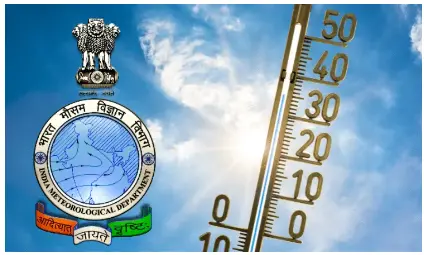
About the India Meteorological Department (IMD)
- Established in 1875, the IMD serves as the National Meteorological Service of India and is the primary government agency responsible for meteorology and related subjects.
- The organization is headed by the Director General of Meteorology.
- It comprises 6 Regional Meteorological Centres, each supervised by a Deputy Director General, located in Mumbai, Chennai, New Delhi, Calcutta, Nagpur, and Guwahati.
Mandate
- Conduct meteorological observations and provide current and forecasted meteorological information to support various weather-sensitive activities such as agriculture, shipping, aviation, and offshore oil explorations.
- Issue warnings for severe weather phenomena like tropical cyclones, dust storms, heavy rains, heatwaves, etc., which pose threats to life and property.
- Supply meteorological statistics required for sectors like agriculture, water resource management, industries, and oil exploration.
- Conduct and promote research in meteorology and related disciplines.
Nodal Ministry: Ministry of Earth Sciences (MoES)
Headquarters: New Delhi
Source: PIB
Zero FIR
In News: Recently, the police filed a zero FIR case against a former minister of Telangana, alleging that he made objectionable comments against the Telangana Chief Minister.
About Zero FIR
- Zero FIR refers to a First Investigation Report (FIR) that is filed regardless of the location where the offense occurred.
- In such cases, the police cannot cite lack of jurisdiction as a reason for not registering the FIR.
- Subsequently, the FIR is transferred to the appropriate police station with jurisdiction to commence the investigation.
- It was introduced based on the recommendation of the Justice Verma Committee, which was formed after the Nirbhaya gang rape incident in Delhi in 2012.
- This provision legally obligates the police to initiate an investigation promptly without using jurisdictional constraints as an excuse.
- Objective: The aim is to ensure that victims do not face hurdles in getting their complaints registered with the police. It seeks to provide swift redressal to the victim, enabling timely action following the FIR filing.
Source: TH
“The PMLA — a law that has lost its way”
In News: A recent article delves into different facets of the Prevention of Money Laundering Act, 2002 (PMLA), emphasizing a significant issue wherein the Act encompasses offenses unrelated to its main aim of addressing drug money laundering.
Overview of Prevention of Money Laundering Act, 2002 (PMLA)
- About PMLA
- Enacted to prevent money laundering and confiscate proceeds derived from such activities.
- Targets money laundering associated with illegal practices like drug trafficking, smuggling, and terrorism financing.
- Key Provisions
- Defines money laundering offenses and imposes penalties, including rigorous imprisonment and fines.
- Allows for attachment and confiscation of properties involved in money laundering, overseen by an Adjudicating Authority.
- Mandates reporting of suspicious transactions by entities like banks to the Financial Intelligence Unit (FIU).
- Establishes a Designated Authority for investigation and prosecution, along with an Appellate Tribunal for appeals.
- Objectives
- Prevention: Implement stringent measures to prevent money laundering and monitor financial transactions.
- Detection: Investigate and detect instances of money laundering through effective enforcement mechanisms.
- Confiscation: Confiscate properties derived from money laundering to deter offenders and disrupt illicit financial flows.
- International Cooperation: Facilitate international collaboration in combating money laundering and terrorist financing.
Factors Leading to Adoption of PMLA, 2002
- Global Drug Trade and UN Action
- The United Nations' focus on combating money laundering related to drug crimes, leading to conventions and resolutions urging member countries to enact legislation.
- Establishment of the Financial Action Task Force (FATF) to address money laundering concerns.
- Indian Response and Legislative Action
- Utilization of FATF recommendations by the Indian government to draft legislation to prevent drug money laundering.
- Enactment of PMLA by the Indian Parliament in 2002, influenced by UN resolutions and FATF guidelines.
- Narasimham Committee Recommendations
- Recommendations from the Narasimham Committee on Banking Sector Reforms emphasized the need to address money laundering within the Indian financial system, contributing to legislative action.
- Alignment with International Standards
- PMLA aimed to align with UN resolutions and FATF recommendations, focusing on combating drug money laundering.
Concerns Regarding PMLA, 2002
- Broad Definition of "Proceeds of Crime"
- Concerns about the broad interpretation of this term potentially encompassing lawful transactions, raising the risk of misuse.
- Inclusion of Unrelated Offenses
- Criticism regarding the inclusion of numerous offenses in the PMLA schedule unrelated to its original purpose of combating drug money laundering.
- Burden of Proof on Accused
- Critiques of the unreasonably burdensome burden of proof placed on accused individuals, potentially challenging fair trial principles.
- Potential Overreach by Authorities
- Fears of excessive powers granted to authorities under the PMLA, raising concerns about misuse and infringement of rights.
- Stringent Bail Conditions
- Criticism of stringent bail conditions under the PMLA, deviating from the presumption of innocence principle.
- Violation of Constitutional Rights
- Concerns regarding violations of constitutional rights, particularly related to arrest procedures under the PMLA.
Suggestions for Reforming PMLA, 2002
- Refinement of "Proceeds of Crime" Definition
- Propose a clearer definition to mitigate ambiguity and ensure alignment with international standards.
- Reassessment of Burden of Proof
- Evaluate burden of proof to balance fairness and investigative needs, considering amendments for equitable distribution.
- Safeguards Against Overreach
- Introduce checks and balances to prevent misuse of authority, establish clear protocols, and ensure due process.
- Review of Bail Conditions
- Conduct a comprehensive review of bail conditions to assess necessity and alignment with legal principles.
- Enhanced Independence and Transparency
- Strengthen independence of enforcement agencies and enhance transparency in their operations.
- Public Awareness and Education
- Conduct public awareness campaigns to educate citizens about PMLA procedures and rights.
- Consultative Approach
- Adopt a consultative approach involving legal experts, stakeholders, and public input for policymaking.
Conclusion
- Judicial Approach to Bail
- Consideration of personal liberty principles in bail decisions, balancing investigative needs with individual rights.
- Evolution of PMLA
- Recognition of complexities and challenges in addressing money laundering while ensuring fairness and justice.
|
UPSC Previous Year Questions Mains (2021) Q. Discuss how emerging technologies and globalisation contribute to money laundering. Elaborate measures to tackle the problem of money laundering both at national and international levels. |
Source: TH
Share the article
Edukemy’s Current Affairs Quiz is published with multiple choice questions for UPSC exams
MCQ
Get Latest Updates on Offers, Event dates, and free Mentorship sessions.

Get in touch with our Expert Academic Counsellors 👋
FAQs
UPSC Daily Current Affairs focuses on learning current events on a daily basis. An aspirant needs to study regular and updated information about current events, news, and relevant topics that are important for UPSC aspirants. It covers national and international affairs, government policies, socio-economic issues, science and technology advancements, and more.
UPSC Daily Current Affairs provides aspirants with a concise and comprehensive overview of the latest happenings and developments across various fields. It helps aspirants stay updated with current affairs and provides them with valuable insights and analysis, which are essential for answering questions in the UPSC examinations. It enhances their knowledge, analytical skills, and ability to connect current affairs with the UPSC syllabus.
UPSC Daily Current Affairs covers a wide range of topics, including politics, economics, science and technology, environment, social issues, governance, international relations, and more. It offers news summaries, in-depth analyses, editorials, opinion pieces, and relevant study materials. It also provides practice questions and quizzes to help aspirants test their understanding of current affairs.
Edukemy's UPSC Daily Current Affairs can be accessed through:
- UPSC Daily Current Affairs can be accessed through Current Affairs tab at the top of the Main Page of Edukemy.
- Edukemy Mobile app: The Daily Current Affairs can also be access through Edukemy Mobile App.
- Social media: Follow Edukemy’s official social media accounts or pages that provide UPSC Daily Current Affairs updates, including Facebook, Twitter, or Telegram channels.

